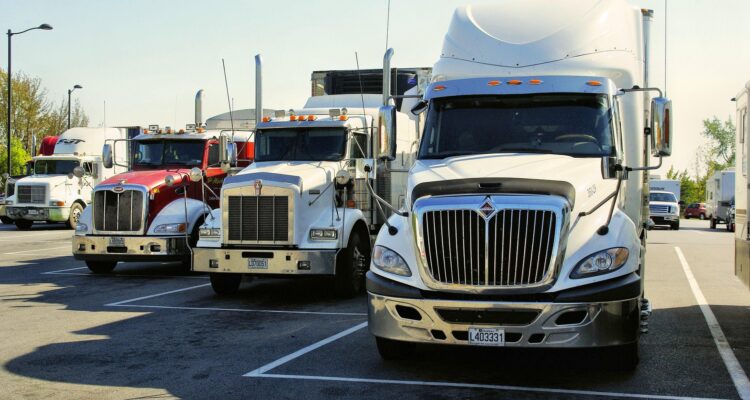Whether you’re managing a fleet in the U.S. or the U.K., road transport keeps businesses moving. But factors like road networks and vehicle design vary widely between the two countries.
Understanding these differences goes beyond familiarising yourself with the rules. It involves optimising your fleet, cutting costs and making practical transport decisions. Whether choosing the right truck or managing fuel efficiency, knowing how U.S. and U.K. transport systems compare gives you an edge in keeping your fleet running smoothly.
Our regular US contributor, Evelyn Long, Editor-in-Chief of Renovated Magazine provides her thoughts on the main differences between the US and UK’s logistics industry.
1. Vehicle Design and Regulations
Fleet managers must understand how truck design affects how your vehicles handle the road. In the U.S., trucks have long-nosed cabs with engines in front, designed for comfort and aerodynamics on open highways. But that extra length means wide turns and more space needed at loading docks — something to consider if you operate in tight areas.
U.S. federal laws set minimum trailer lengths, so states can’t limit semitrailers to less than 48 feet, making these trucks even longer overall. Meanwhile, trucks in the U.K. have the engine positioned under the cab, keeping things compact and easier to manoeuvre on narrow roads and roundabouts.
2. Fuel and Cost Considerations
Fuel costs can make or break your fleet’s bottom line, and if you operate in the U.K., you know diesel prices are sky-high thanks to heavy taxation. That means you must prioritise fuel efficiency, lightweight materials and strict emissions compliance to keep costs down.
In the U.S., fuel is cheaper, so fleets can afford larger trucks with bigger fuel tanks, often made from aluminium sheets and aluminium coil to keep the weight manageable in Class 8 trucks. While both regions emphasise efficiency, U.K. fleets must deal with low-emission zones. Meanwhile, U.S. trucks are optimal for long-haul durability, even with higher maintenance costs.
3. Technology and Automation in Transport
Real-time GPS tracking is crucial for efficiency and compliance. However, the rules around telematics differ between the U.S. and the U.K. No matter where you operate, this tool helps you plan better routes, cut fuel costs and keep projects on schedule.
In the U.S., where long, open highways dominate, fleets push forward with autonomous trucking, aiming to boost efficiency and reduce driver fatigue. Meanwhile, the U.K. is all about urban last-mile solutions and electric vehicles, which adapt to strict emissions rules and dense city traffic.
4. Road Infrastructure and Driving Conditions
The road network you operate in significantly impacts efficiency and planning. In the U.S., long, straight highways make long-haul freight the backbone of transportation, allowing for higher speeds and fewer urban restrictions. Trucks can cover massive distances with minimal stops, making highway optimisation a priority.
In the U.K., it’s a different story. A denser road network, more roundabouts and urban congestion mean fleets must navigate tighter spaces and frequent slowdowns. Stricter speed limits and congestion zones in cities add another layer of complexity, requiring careful route planning and compliance.
5. Driver Regulations and Working Hours
Driver regulations are pivotal to your fleet’s efficiency, and the rules vary significantly between the U.S. and the U.K. EU-style working hour regulations mean strict tachograph enforcement, requiring precise monitoring to stay compliant. Drivers can operate up to nine hours a day, with the option to extend to 10 hours, but only twice a week. You must plan routes carefully to avoid violations while maximising productivity.
In the U.S., Hours of Service rules rely on electronic logging devices to track drive time, but long-haul operations have more flexibility. While U.S. drivers have more leeway in scheduling, fleets must still plan rest stops strategically to stay compliant and avoid penalties.
6. Adapting to Different Regulations and Road Conditions
Adapting your fleet management strategy to regulatory and infrastructure constraints helps you stay efficient, compliant and cost-effective. Whether dealing with emission rules or road network limitations, aligning your operations with local regulations enables you to avoid fines and improve overall fleet performance.



















